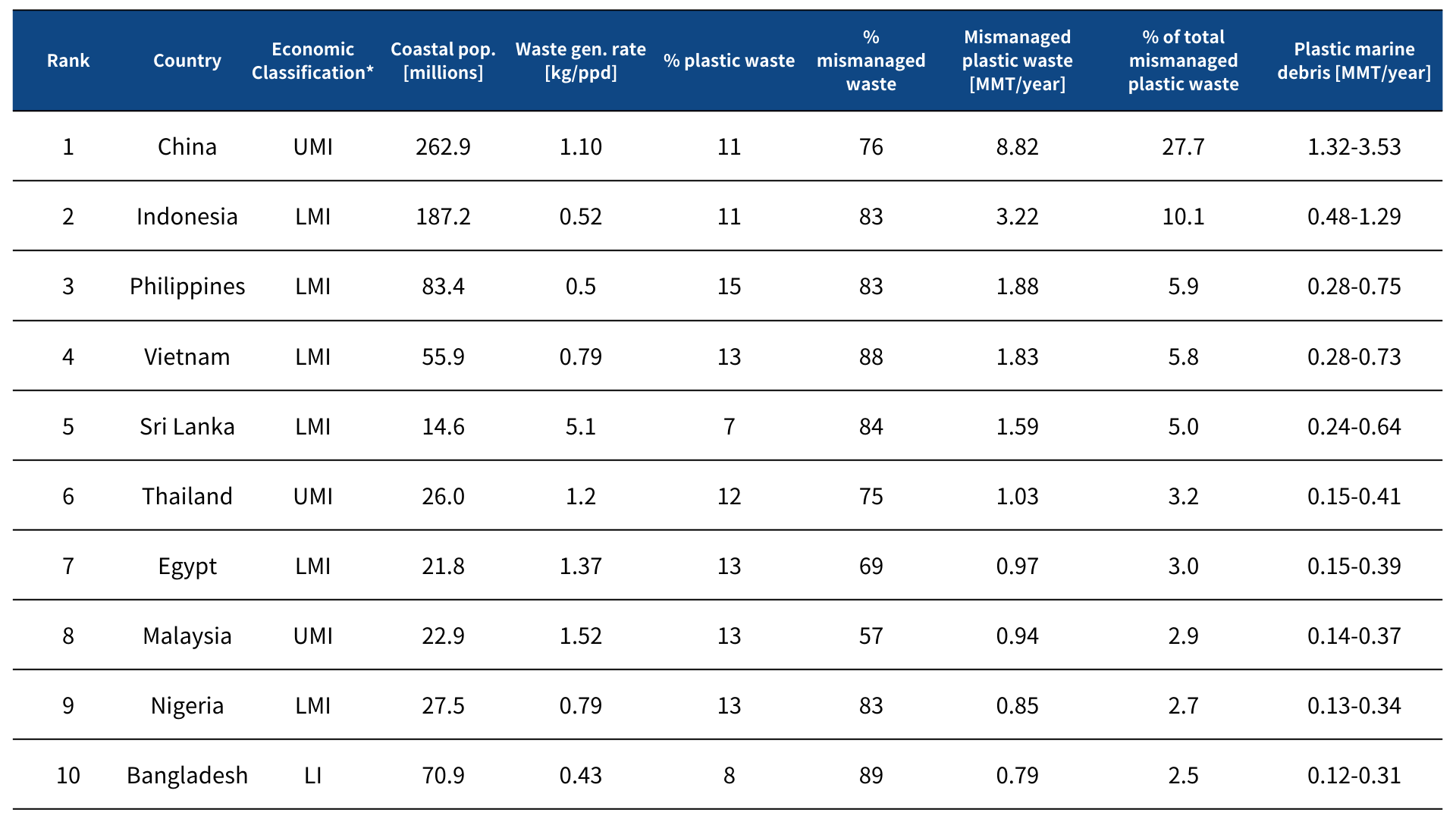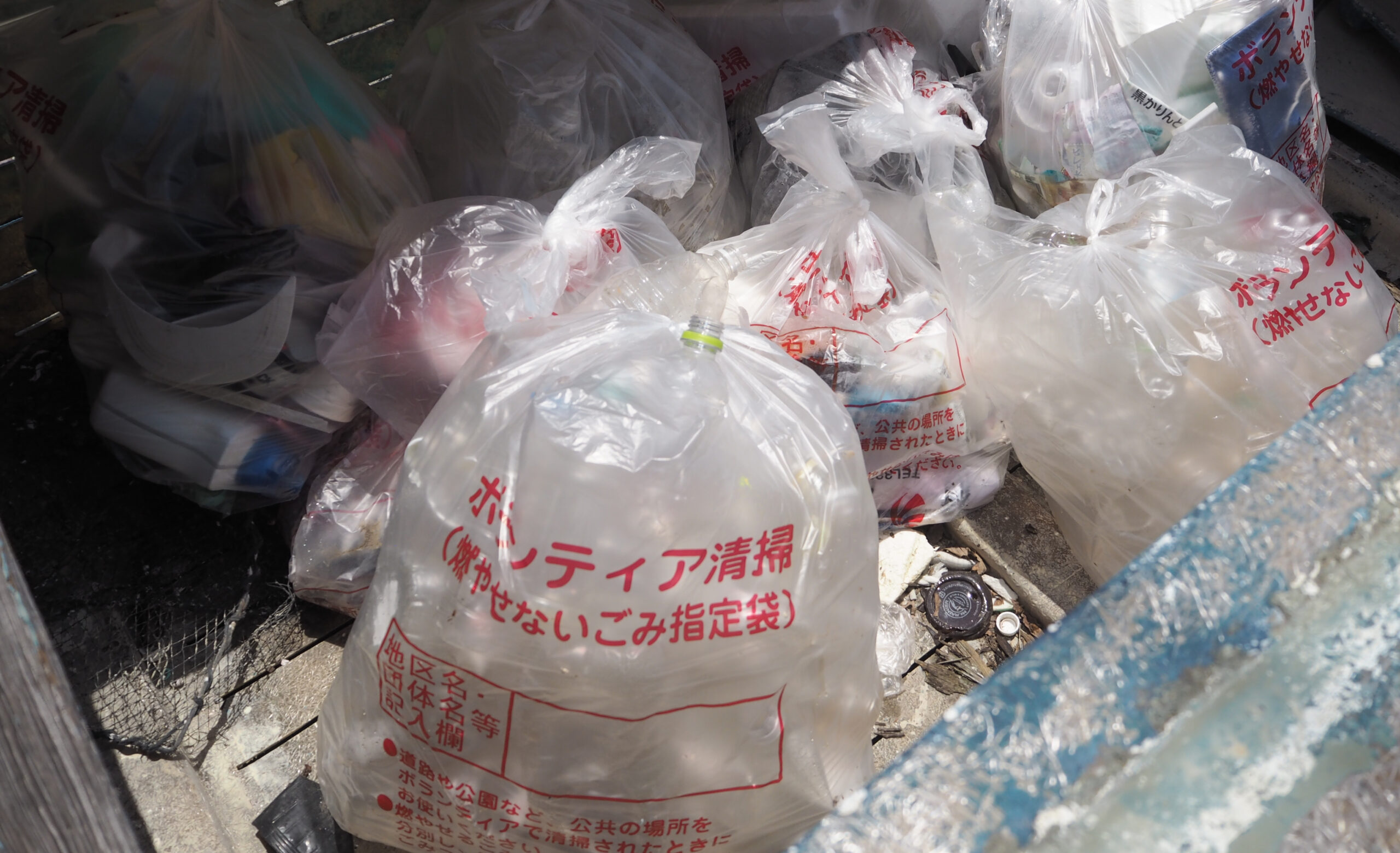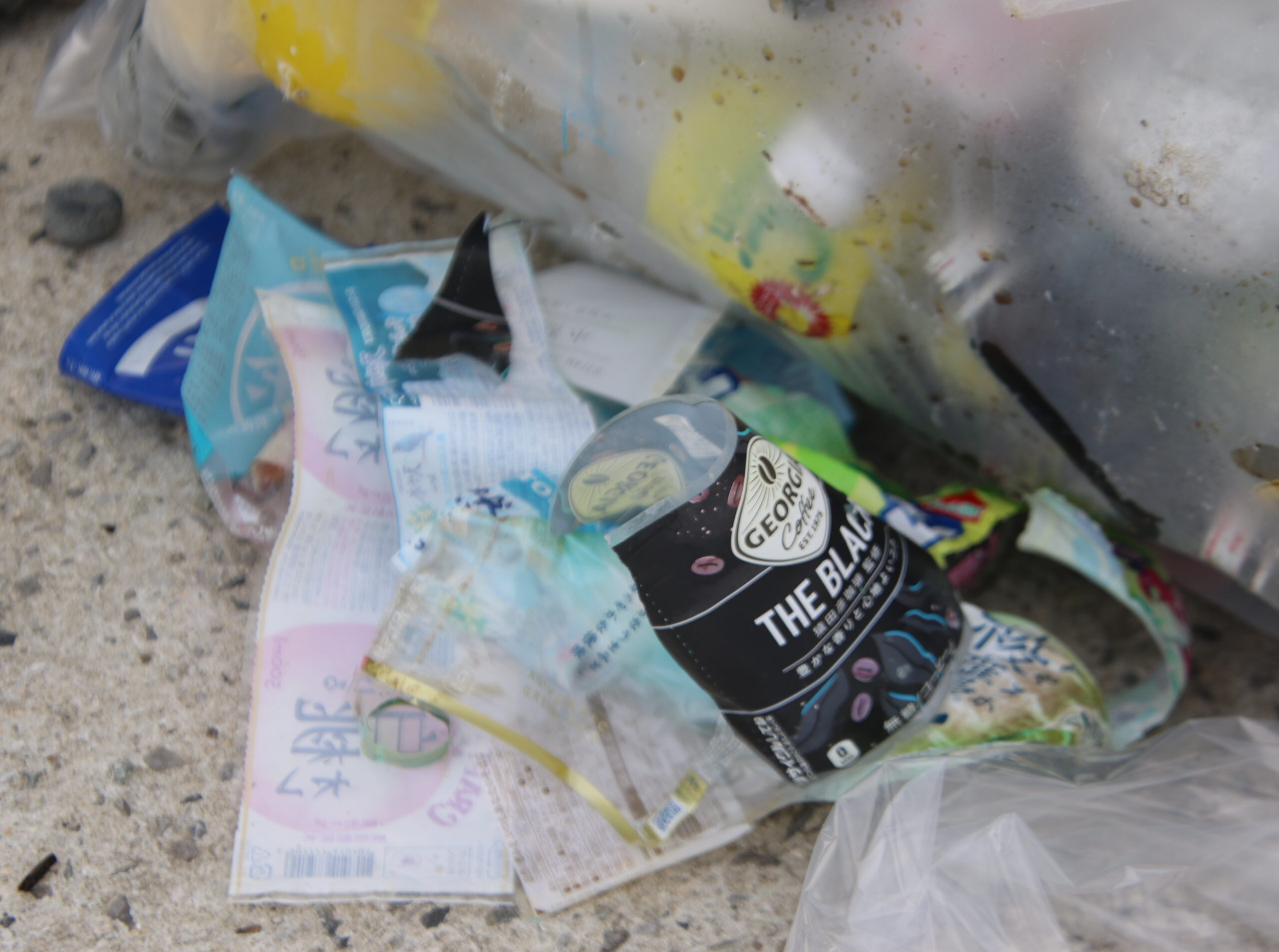Learn about the Marine Debris Problem
The marine debris problem is having a serious impact on our lives. There is already about 150 million tons of plastic litter in the world’s oceans, with at least 8 million tons of new plastic litter entering the oceans each year (Source: WWF Japan).
At this rate, it is predicted that by 2050 the weight of plastic litter in the ocean will exceed that of fish (Source: IDEAS FOR GOOD).
It is estimated that approximately 20,000 to 60,000 tons of plastic litter is discharged into the ocean annually from Japan (Source: Nippon Foundation), and plastic accounts for more than 65% of marine debris. This litter causes damage to at least 700 species of marine life, including sea turtles, seabirds, and whales, 92% of which are caused by plastic litter (Source: Nippon Foundation).
In addition, plastics degrade and become microscopic microplastics, which can affect marine ecosystems and human health.
The marine debris problem is progressing on a global scale, and in order to realize a future in which we can continue to use plastics while eliminating marine pollution, it is important for consumers, the United Nations, nations, corporations, NGOs, and others to work across the boundaries of their fields to reduce the amount of waste discharged into the ocean and increase the amount of marine litter already discharged and collected for recycling. It is important to reduce the amount of waste entering the ocean and increase the amount of marine debris collected and recycled.
Purpose of Reserch
While respecting the conventional 3Rs (Reduce, Reuse, Recycle), focus on Recovery and aim for virtually zero emissions by offsetting marine debris.
Waste Estimates for the Top 10 Countries (2010)

Source:
Jambeck, J.R., Geyer, R., Wilcox, C., Siegler, T.R., Perryman, M., Andrady, A., Narayan, R., Law, K.L., Science, 2015, 347, 768-771
Plastic Waste Management Institute, 2022. Material Flow of Plastic Products in 2021: Production, Disposal, Recycling, and Treatment/Final Disposal.
*UMI: Upper-Middle Income, LMI: Low-Middle Income, LI: Low-Income
Why is Shodoshima Island suitable for the demonstration of marine debris collection?
(1) An environment that allows for verification on the coast and at sea.
With the cooperation of the fishery cooperative on Shodoshima, an environment is in place for verification on the beach and at sea.

(2) The local government is paying for the disposal of marine debris.
In Kagawa Prefecture, the local government bears the cost of disposing of marine debris for which disposal responsibility is not clear, so collected marine debris can be disposed of free of charge.

(3) Much marine debris originating from Japan
Approximately 93% of the marine litter in the Seto Inland Sea comes from Japan. The total annual inflow of marine litter in the Seto Inland Sea is estimated at 4,500 tons/year, of which 3,000 tons/year (66%) comes from land, 1,200 tons/year (27%) occurs in the sea, and only 7%, or 300 tons/year, comes from outside*. Therefore, we can view the collection of marine debris as our own affair, not a problem caused by inflows from overseas.
*Shigeru Fujieda, Akira Hoshika, Eisuke Hashimoto, Satoshi Sasakura, Takanori Shimizu, Seitaka Okumura, Journal of Coastal Zone Studies, 2010, 22, 17-29

